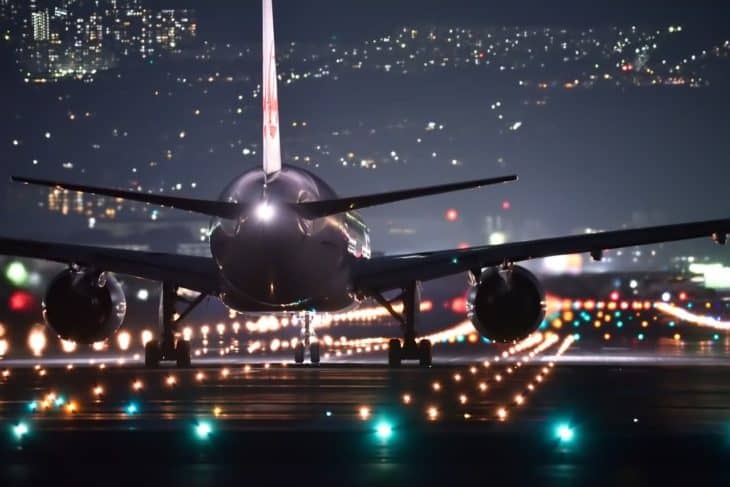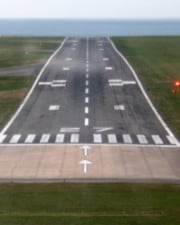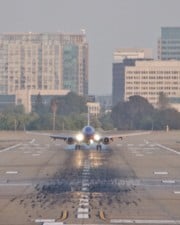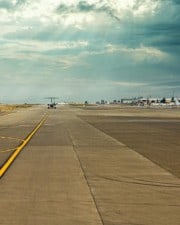It may surprise an aviation outsider to learn this, but airports are among the most challenging places for pilots to navigate. Planes are built to fly, and operating them on the ground isn’t always easy. They don’t have great visibility, they don’t turn around fast, and they can’t back up. Furthermore, those long wings have to be kept away from fences, signs, and vehicles.
Table of Contents
To make matters worse, airports are confusing. No two are alike, since they are built in all different sizes, with different length runways pointing every different direction. When you add all the possible permutations of taxiways and ramps, it’s enough to boggle even a senior captain.
Thankfully, airport markings are standardized worldwide, so that pilots can safely operate where ever they land. Here, we’ll look at the markings and signs found on taxiways, aprons, and ramps. Runways markings are covered here.

What is a Taxiway?
Taxiways are the roadways that airplanes use to get to and from the runway. They connect the runway with the ramp and parking area. Each runway usually has one or more parallel taxiways, with several smaller taxiways allowing landing aircraft to get off the runway quickly.
Taxiways are identified by a letter, and each letter is spoken in the phonetic alphabet. So, Taxiway A is expressed as “Taxiway Alpha” on the radio.
Some complex airports name their smaller taxiways based on larger ones. Short connecting taxiways off of the main Taxiway A might be called Taxiway A1 or Taxiway AB.

Basic Taxiway Markings
Taxiways are differentiated from runways by the color of their markings–all runway markings are white. All other markings, whether they be taxiways or ramp, are painted in yellow.
The most crucial marking of a taxiway is the centerline stripe. It is a single solid yellow stripe. Some taxiways also have edge markings, noted by double solid yellow stripes on each edge.
The wings of a plane extend a long way to the left and the right of the pilot, and they are behind them. From the pilot’s perspective, it’s a lot easier to drive by focusing on keeping the middle of the plane over the centerline stripe.
Since taxiways are built for airplanes, there should be no obstacles on either side to worry about. Still, the pilot does keep an eye out for things sticking up. The wings of many planes extend well beyond the paved edges of the taxiways.
When the edge of a taxiway is connected by pavement to a ramp area, the double edge stripe may be solid or dashed. A dashed line can be crossed, but a solid line indicates that it should not be.
Taxiway shoulders markings show pavement edges or aprons. If these are located where aircraft are not intended to be operated, they are marked with yellow hashes painted at angles to the taxiway.
Finally, if a taxiway crosses another taxiway or ramp, and a pilot is expected to hold there, a single dashed yellow line will mark it. It will be painted perpendicular to the taxiway.
Runway Intersections
Runway intersections are the most critical parts of airport marking systems. The goal is to make it very obvious for pilots taxiing on the ground that they are about to be on a runway.
Like walking across a busy street, pilots must pause and look both ways before crossing a runway at a minimum. At a controlled airport, they must get a specific clearance from ATC to cross a runway.
At uncontrolled airports that don’t have control towers, pilots are solely responsible for their safety on the airport. It’s often more complicated than it sounds. For example, when a high-wing airplane (like a Cessna) is positioned perpendicular to the runway, the wings block the view of a large portion of the sky.
This huge blind spot means that pilots of these types of planes need to make circles and move the plane around to see if there is air traffic approaching the runway. Unfortunately, there have been many accidents over the years when a high-wing airplane taxied onto the runway for takeoff while a low-wing plane was landing.
Even when air traffic controllers are present at an airport, the responsibility for the safety of the flight still lies with the plane’s pilot in command. Pilots should never trust that controllers aren’t distracted–they’re humans who make mistakes too. Luckily, the controllers say the same thing about the pilots, and both sides look out for one another.
This is just one example of how important it is for pilots to see-and-avoid other aircraft traffic, even when just taxing around an airport. A runway incursion is defined as anytime an unauthorized vehicle or aircraft is on a runway without permission. Some of the most catastrophic aviation disasters have been the result of runway incursions.
Avoiding runway incursions is vital. Taxiway markings are standardized, and extra emphasis is given to runway intersections to alert pilots to pay more attention.
Hold Short Markings
The first indication that a pilot is approaching a runway is usually the hold short bars. These are four yellow lines painted perpendicular to the taxiway, two solid and two dashed. The dashed side is always facing the runway. When the pilot sees this marking, they know they usually need to stop.

The term “hold short” comes from the air traffic controller’s radio instructions. Pilots are routinely told to “taxi to and hold short of Runway X,” where X is the runway number. To hold short means to stop and not proceed onto the runway. When holding short of a runway, no part of the aircraft should extend beyond the painted lines.
Some airports even make a sign with the same marking and position it next to the runway. They might do this to draw extra attention to it, or they might do it because the painted markings are sometimes hard to see.
Hold short markings are usually combined with a mandatory information sign showing the runway numbers. These signs are red with white letters, and they only appear at runway intersections. Think of them like airport stop signs. The same sign in the same colors is sometimes painted right on the surface of the taxiway.

Finally, enhanced taxiway centerline markings are used. These are dashed, painted on each side of the taxiway centerline as it approaches the hold short line. It’s just an easy, inexpensive way for airports to draw more attention to a hazardous intersection.

Runway Hold Short Lights
Another way that airports draw attention to runway crossings is with the use of lights. Flashing yellow lights are often placed next to the hold short bars. Pilots call these “wig-wag lights,” but they are correctly called runway guard lights.
Some airports also have a line of in-ground lights that run the length of the hold short line. The lights are yellow, just like the painted markings. If they are steady-burning, they are known as clearance bar lights. At some airports, they flash and are part of the runway guard light system.
A fancier system of lights can be found at larger airports. Here, a system of red lights can be turned on and off by air traffic controllers. They work like stoplights, so the pilot knows when it safe to cross.
The lights run in-pavement along the hold line, and also at the sides of the taxiway. These stop bar lights flash and are pretty hard to miss. When they are turned off, the green taxiway centerline lights come on, showing the path onto the runway.
ILS Critical Areas
Many major runways are served by instrument landing systems (ILSs). Installed near the runway will be antennas for the radio equipment that makes the system work, including the localizer and the glideslope.
If a metal airplane, full of radios and electronics, gets too close to these antennas, it can interfere with the ILS’s operation. Aircraft using the system in the air may get false readings.

In locations where this is a hazard, areas around the antennas will be designated an “ILS critical area.” If a taxiway crosses this area, it will have unique hold lines. Next to these lines will be a red and white mandatory sign that reads “ILS.”

The ILS hold short area is usually a long way before the main runway hold short line. Pilots only need to hold short of the ILS critical area if they are instructed to do so, or if the ILS is in use during instrument weather conditions.
Ramp and Apron Markings
Airports differentiate zones based on where pilots need clearance to go, or “movement areas,” and places where you can move around without involving air traffic control (“non-movement areas”).
It may seem a little counter-intuitive, but these terms come from the air traffic controller’s perspective. From their perspective, they’re only in charge of “movement areas.”
Non-movement areas are typically called ramps or aprons. These are areas where aircraft park for the night or move between hangers. There’s usually a miss-mash of traffic found here. Airplanes are being piloted on their way in and out, planes being tugged, fuel and service vehicles, and at smaller airports, even cars picking up passengers or driving to their hangers.
Airport apron markings aren’t entirely standardized, especially at smaller airfields. They’re often put in place by the FBO or the airport authority. When possible, they make them look like the rest of the airport signs.
The edge of the non-movement area is of particular interest to pilots since this is the farthest point they can operate on the ramp before they have to call ATC. The non-movement area boundary is marked with a dashed line over a solid line painted in yellow. It looks like a half of a hold short marking.

When a pilot reaches the non-movement area boundary, they call ATC to request clearance to taxi. The first thing the controller needs to know is where that pilot is located.
At many airports, the pilot can say that they are holding at a specific taxiway. Some airports have simplified things by using spot numbers painted on the ground and marked on airport diagrams. The pilot simply states which spot number they are at, and air traffic control knows right where to look.
At major airports, you’ll often see a lot of ground vehicle traffic using the ramp. There are luggage carts, fuel trucks, tugs, and all other shapes and sizes of vehicles. On the ramp area, roadways are marked with thin white stripes. If the roadway is close to taxiways, then it is shown with a particular white zipper-shaped stripe.
Taxiway Signs
Just as vital as what’s painted on the ground are the signs that accompany it. We’ve already discussed some of the most important signs, the mandatory airport signs. These red signs with white letters mark vital areas like runway intersections or ILS critical areas. They can also be used to denote “Do Not Enter” areas.
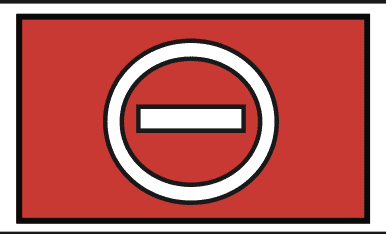
Taxiway location signs indicate where the viewer is located. They are black signs with yellow letters. Most of the time, these will feature a simple letter, which corresponds to the name of the taxiway that you’re on. The sign below indicates that you are on Taxiway Bravo.

Location signs sometimes appear on runways too. The sign below means that you’re on Runway 22.

Directional signs tell pilots where they can go. Think of them as freeway exit ramp signs, but they are yellow with black letters. This sign means that if the pilot turns right, they’ll be on Taxiway Juliet.

Directional signs like this one can point to anything at the airport. They can point to runways or say things like “FBO” or “RAMP.” The same format sign (yellow with black letters) is also used for informational purposes. A common use is to remind pilots of essential info, like noise abatement procedures or tower frequencies.
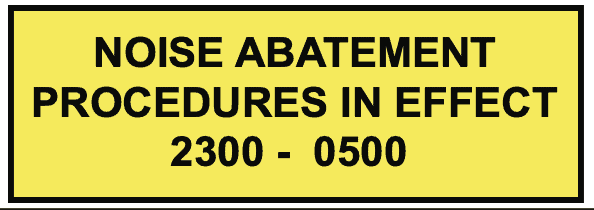
A yellow sign with black bars can be used as a visual warning that the pavement ends.
Any of these signs can be painted on the taxiway or ramp surface. This adds as an extra visual clue to the pilot in case they miss the sign.
Taxiway Lights
Operating at an airport at night is even more confusing, especially if a pilot has never been there before. The color of the light usually corresponds to the type of surface.
Just like the painted markings, white is only used for runways. Runway edge and centerline lights, just like their painted stripes, are white. The only exception is when other colors are mixed in. For example, the last 3,000 feet of the runway centerline light has alternating yellow and white lights. The lights alternate red and white for the last 1,000 feet.
The runway threshold is shown by green lights on the approach end and red lights on the far end. The lights are bi-colored, so the direction that the viewer is seeing them makes the difference.
The taxiway edge lights are blue. If a runway has in-pavement centerline lights, which is only standard at very large airports, they will be green. Green is also used for lead-on lines where a taxiway enters or exits a runway.
Red lights at airports often denote obstacles that stick up. If something like a weather or radio tower sticks up and creates a difficult-to-see hazard, it will have a red obstruction light.
Most signs are lit, but otherwise, airports are pretty dark places. The colors and positions of lights are essential to flight safety because there are few other visual clues to go from at night.
References ▾
Related Posts
